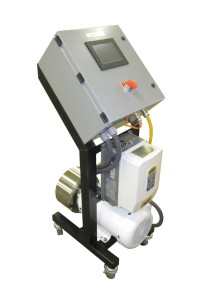Mixing
Inside the SPR there is a spinning rotor producing millions of microscopic cavitation bubbles. When these bubbles collapse and produce shockwaves, powerful forces are generated that cut up the process material into microscopic sizes. This increases the surface contact area between the liquids, gases and/or solids being mixed and maximizes the efficiency of the process for processes such as hydration, emulsification and gas/liquid mixing. This can be seen below:
The SPR mixes in a totally different way and creates results that cannot be achieved with other equipment. This is all accomplished in a small footprint with no scaling inside the device.
Video of Mixing Action
When a gas such as air or oxygen is added to the Shockwave Power Reactor, you begin to see larger bubbles appearing. As the SPR increases in speed the mixing action will become very chaotic. The large gas bubbles begin to become very small and the still image at the end shows them reduced to a fog.
See the gas-liquid mixing on SPR exit of the SPR in our flotation section.
The SPR Compared to Conventional Mixers
A visual comparison showing the ability of the SPR to mix color into a thick and viscous liquid compared to a static mixer and a high shear mixer.
The SPR represents a paradigm shift in mixing.





